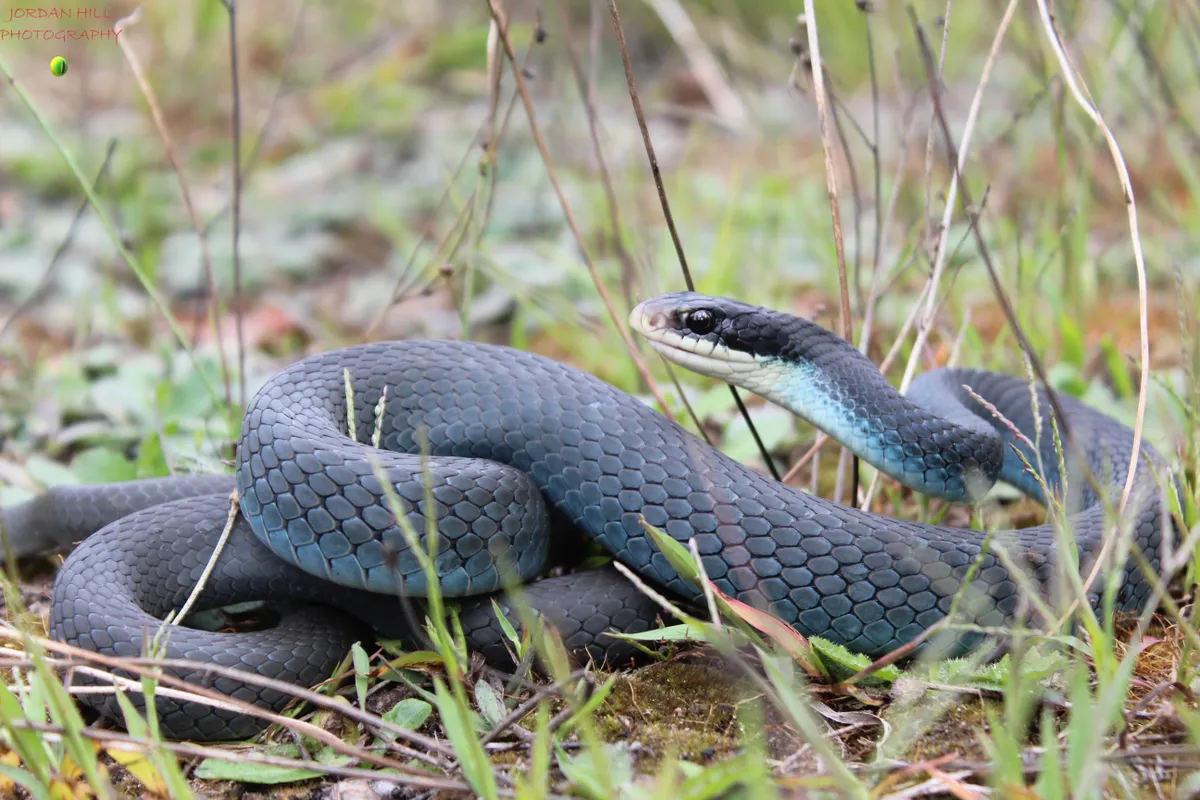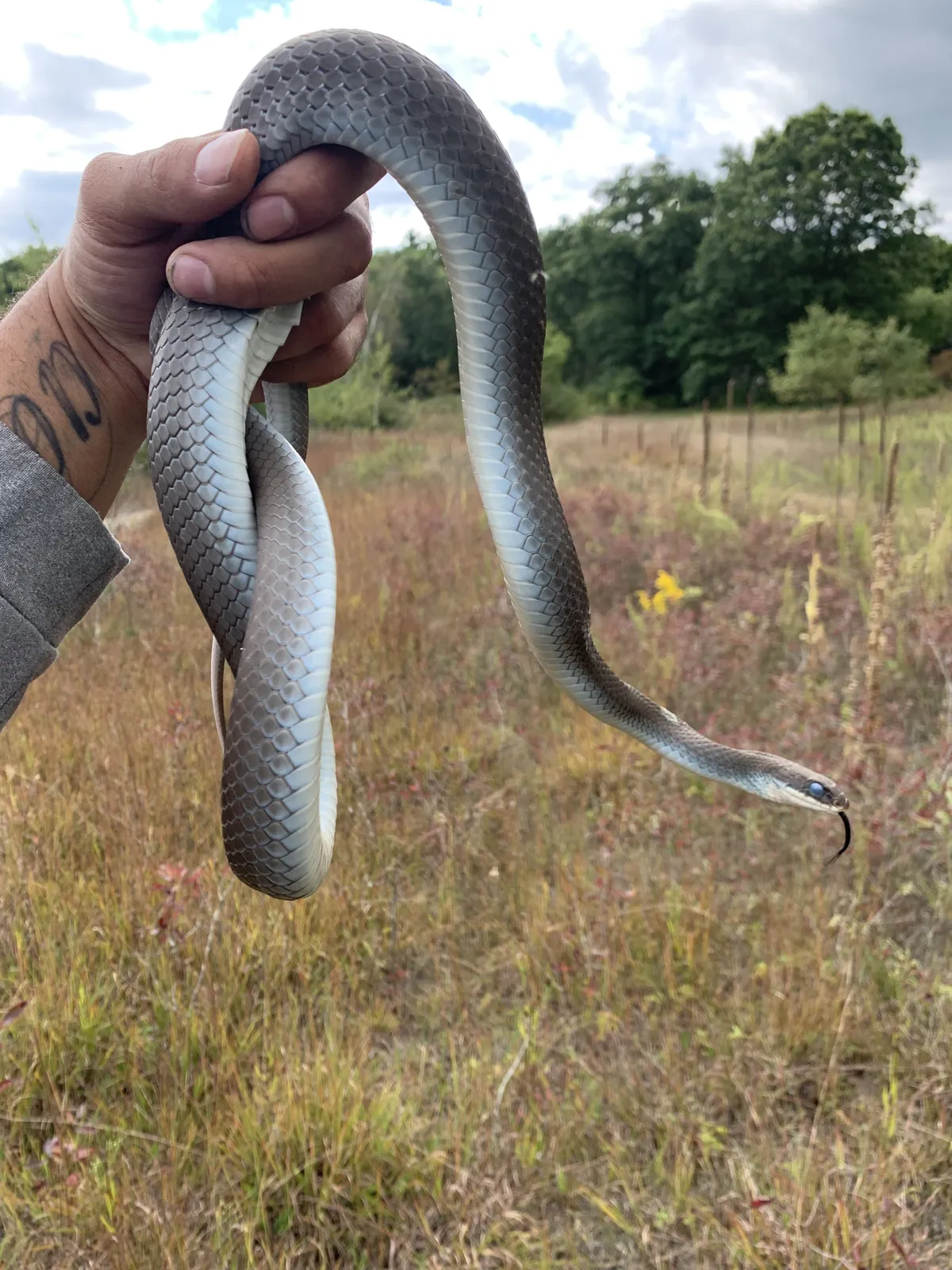Threatened by habitat loss in some of its range, the blue racer snake is a non-venomous subspecies of the Eastern racer snake. Learn more about this species in our expert guide by herper and wildlife biology student Jordan Hill.
What is the scientific name of the blue racer snake?
The scientific name of the blue racer snake is Coluber constrictor foxii. It is a subspecies of the Eastern racer snake, a species that is endemic to North and Central America.
How to identify blue racer snakes
The blue racer is a long slender greyish-blue snake reaching lengths close to two metres while some still surpassing that mark. They have whitish ventrals with a white-goldish face mask.
This species also has two preoculars and two postocular scales around the eye. These snakes are very fast and can be skittish at times. These are only one of the 11 subspecies of racer and are by far the most eccentric.

This snake can be mistaken for other types of snakes as well. When threatened they will rattle their tail in the leaves mimicking that of a rattlesnake like lots of other species do. Blue racers can also commonly be confused with fox snakes when they are juveniles and rat snakes as adults.

Where are blue racer snakes found?
Blue racer snakes' range covers all of the lower peninsula of Michigan as well as the most southern tip of the upper peninsula down through northern Indiana, Illinois, into parts of Minnesota, Wisconsin, and Iowa, and the most southern tip of Ontario, Canada on Pelee Island in Lake Erie.
They prefer a drier habitat with sunny spots along with some cover in the mix. The racers love open forest, fields, old farm pastures, thickets, around marshes, and although they are mostly terrestrial (ground dwelling), although snakes they will often climb and forage.

However, like many other species on this planet, due to habitat loss and degradation, the population of blue racer snakes is in decline.
What do blue racer snakes eat?
Blue racers are diurnal hunters, meaning they hunt during the day. This allows them to hide away at night while their predators come out to hunt. Neonate racers will feed on crickets, beetles, and grasshoppers. Adult blue racers feed on a variety of species from rodents, frogs, other snakes, and even some small birds.
These snakes' predators include birds of prey, racoon, coyotes, and fox.
How many eggs for female blue racer snakes lay?
After a long winter of hibernation mating season begins in April and ends around May. Males will combat other males for territory. Female snakes will lay annual litter of between five and 26 eggs around June.
They will lay their eggs in covered and protected environment then babies hatch around August-September around seven to 12 inches long.
Are blue racer snakes endangered?
The Eastern racer snake is listed as Least Concern on the IUCN Red List, but the different subspecies have not been assessed.

Blue racer snakes are threatened in some of their range, such as Ontario in Canada. Here, Ryan Wolfe at the University of Toronto is leading a population estimate survey and analysing restoration techniques. This will help them better understand how they can manage land in order for it to be suitable for racer populations.
In the author's home state of Michigan, they are not listed as threatened, but are becoming harder to find as their population has decreased due to habitat loss, habitat degradation and human-animal conflict. In the northern part of the lower peninsula there has been some growth.
Are blue racer snakes dangerous to humans?
These beautiful animals are harmless and should be left alone. They are not venomous nor are they poisonous, which is a common myth.
